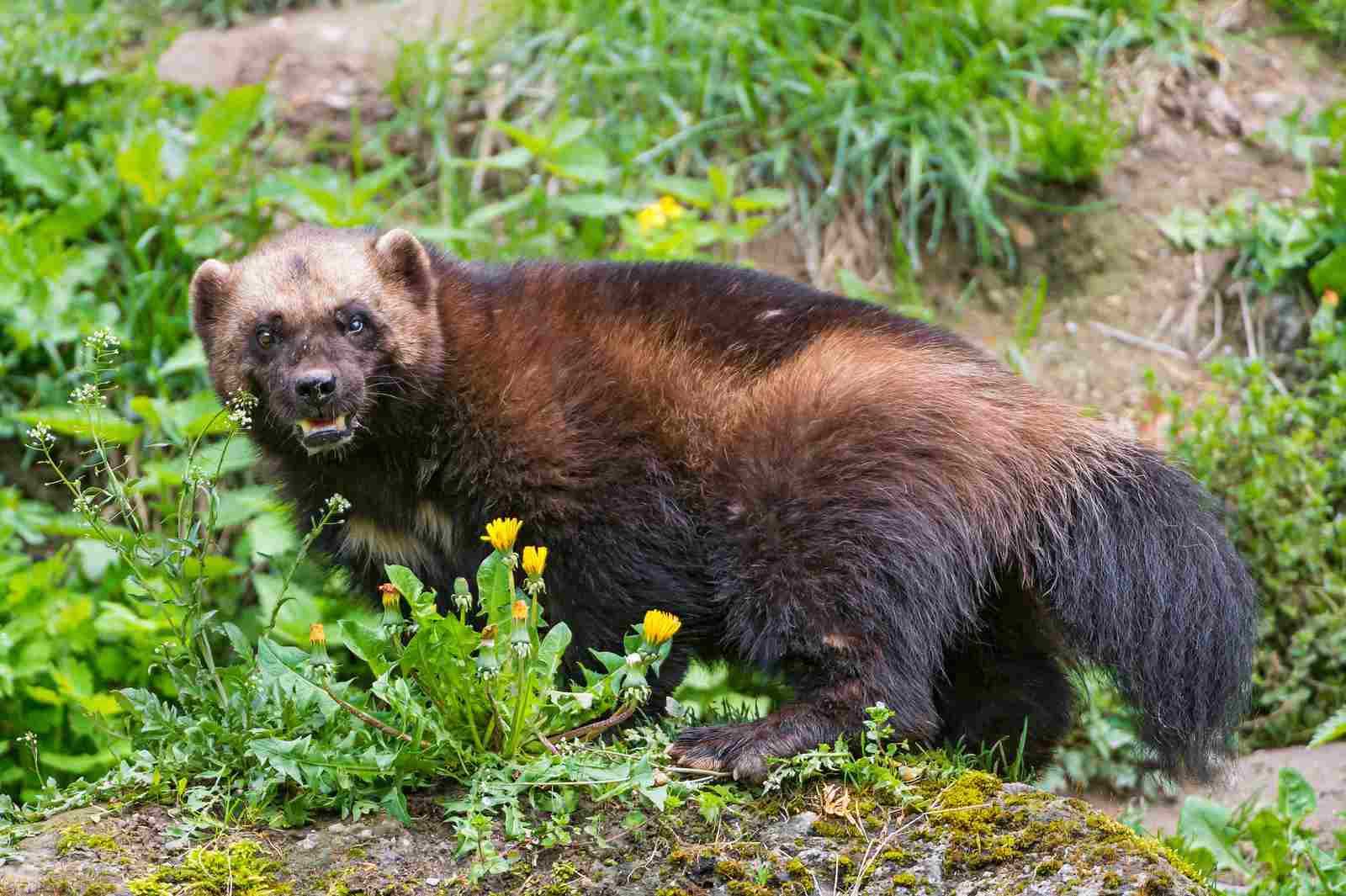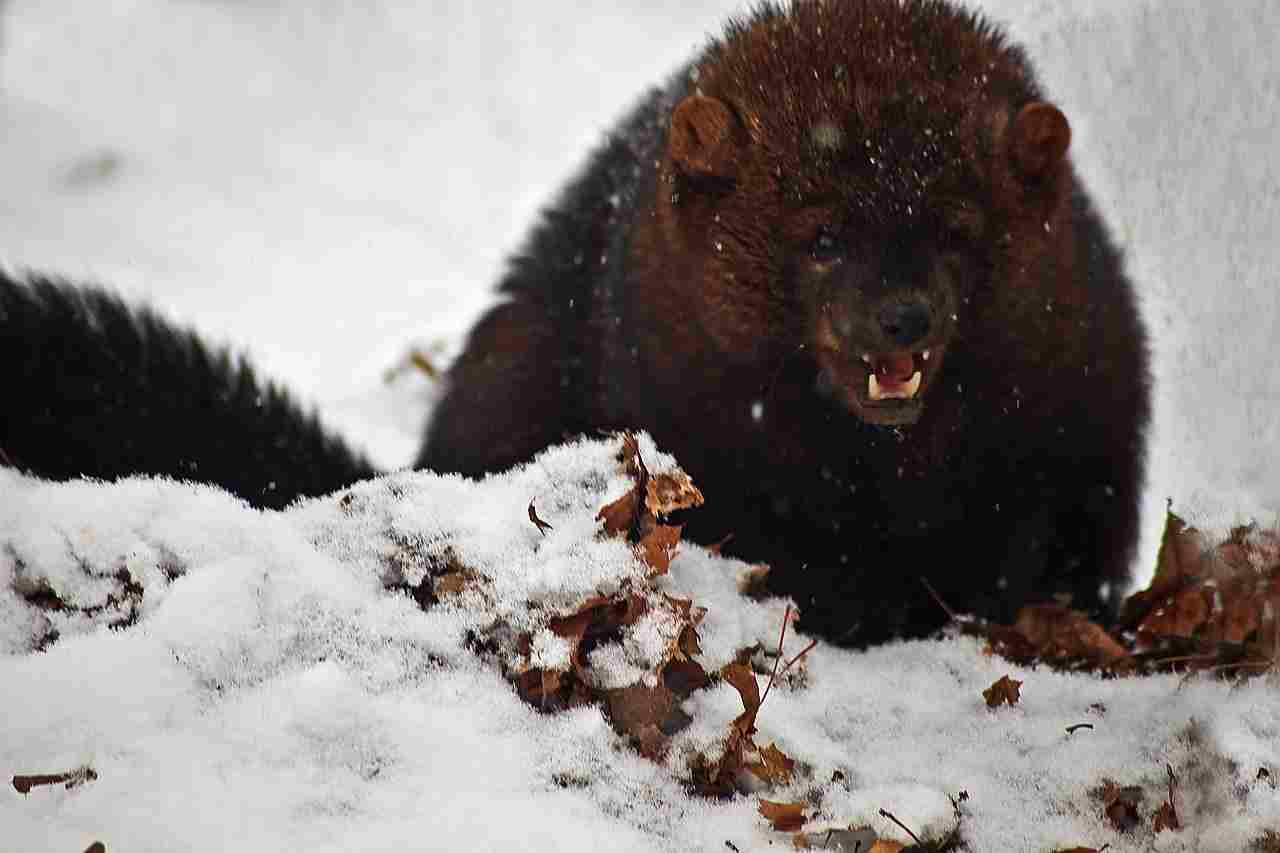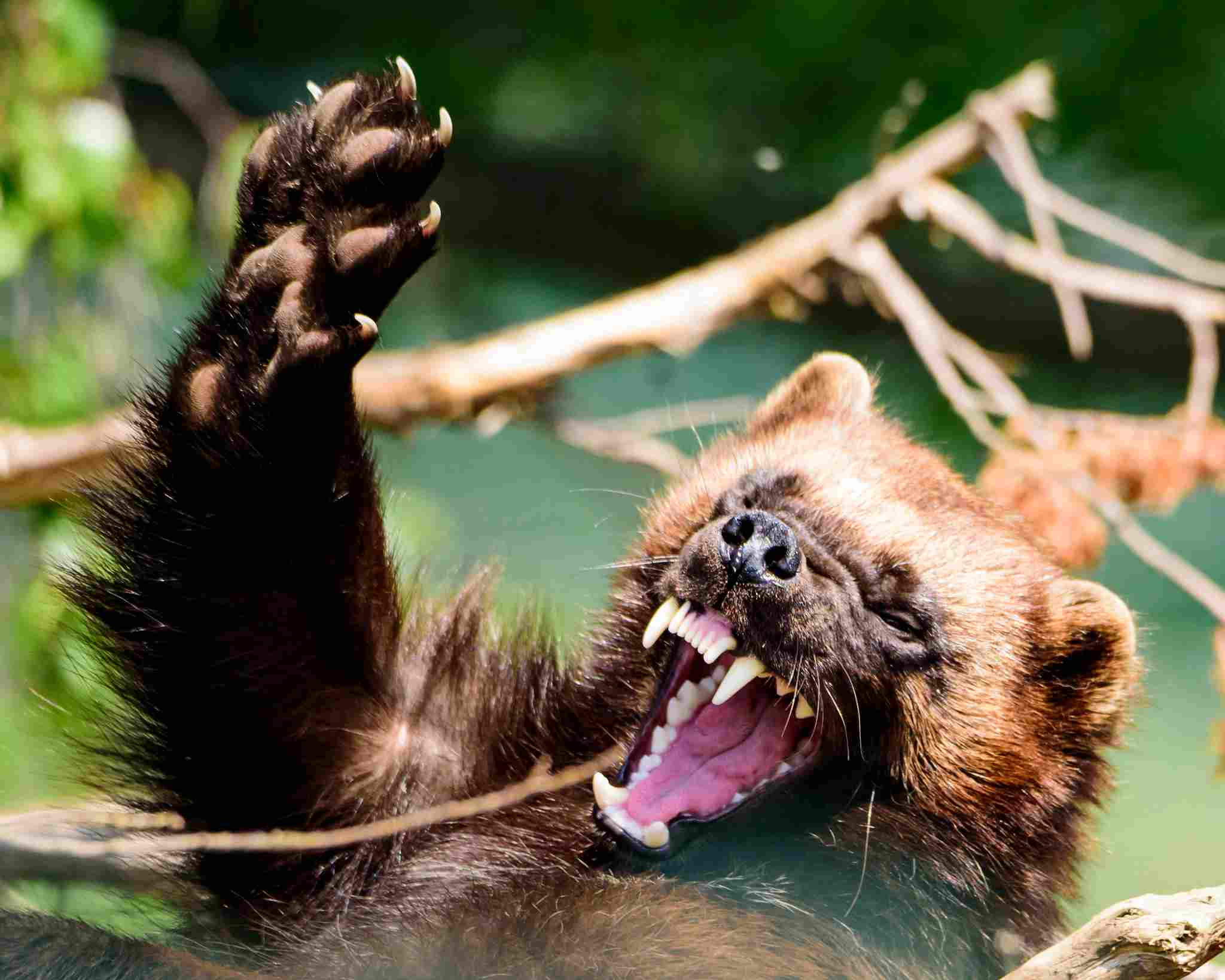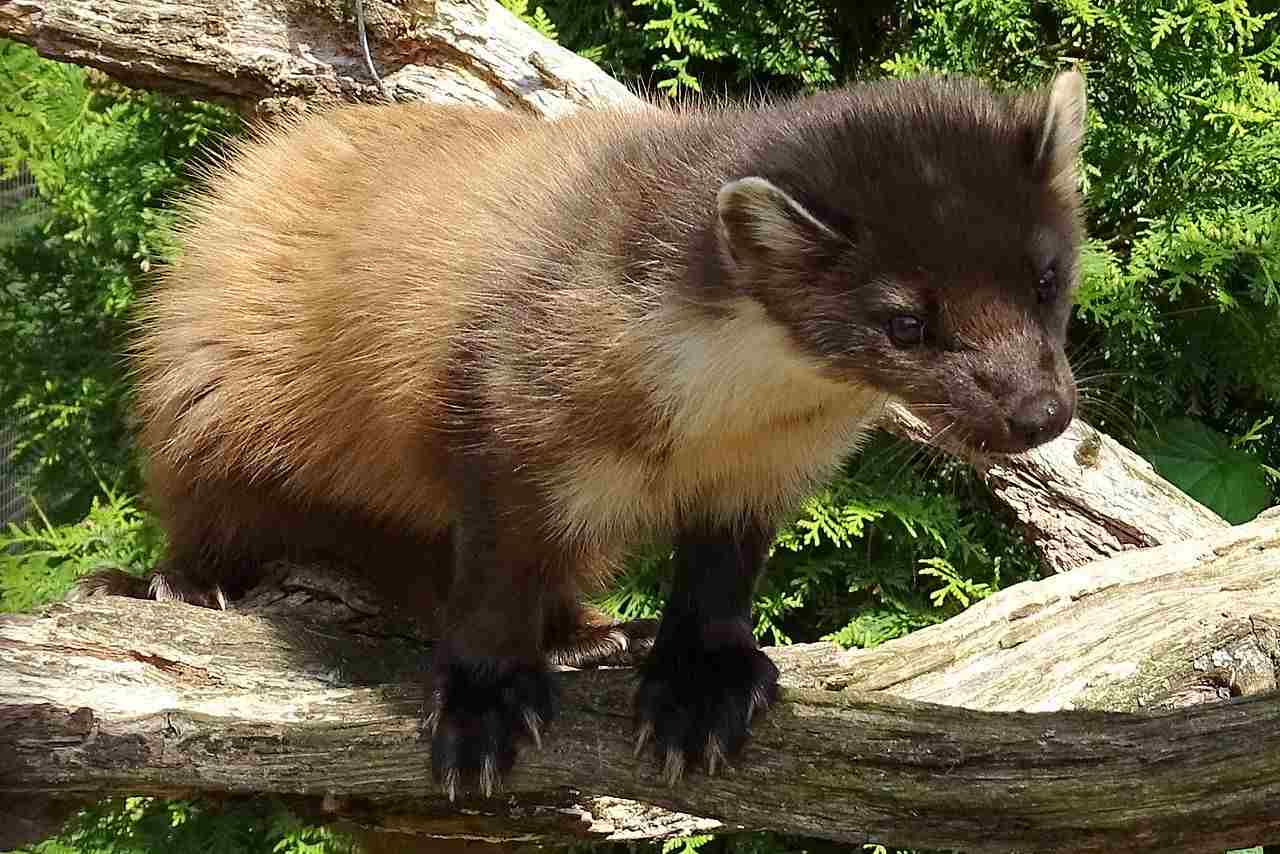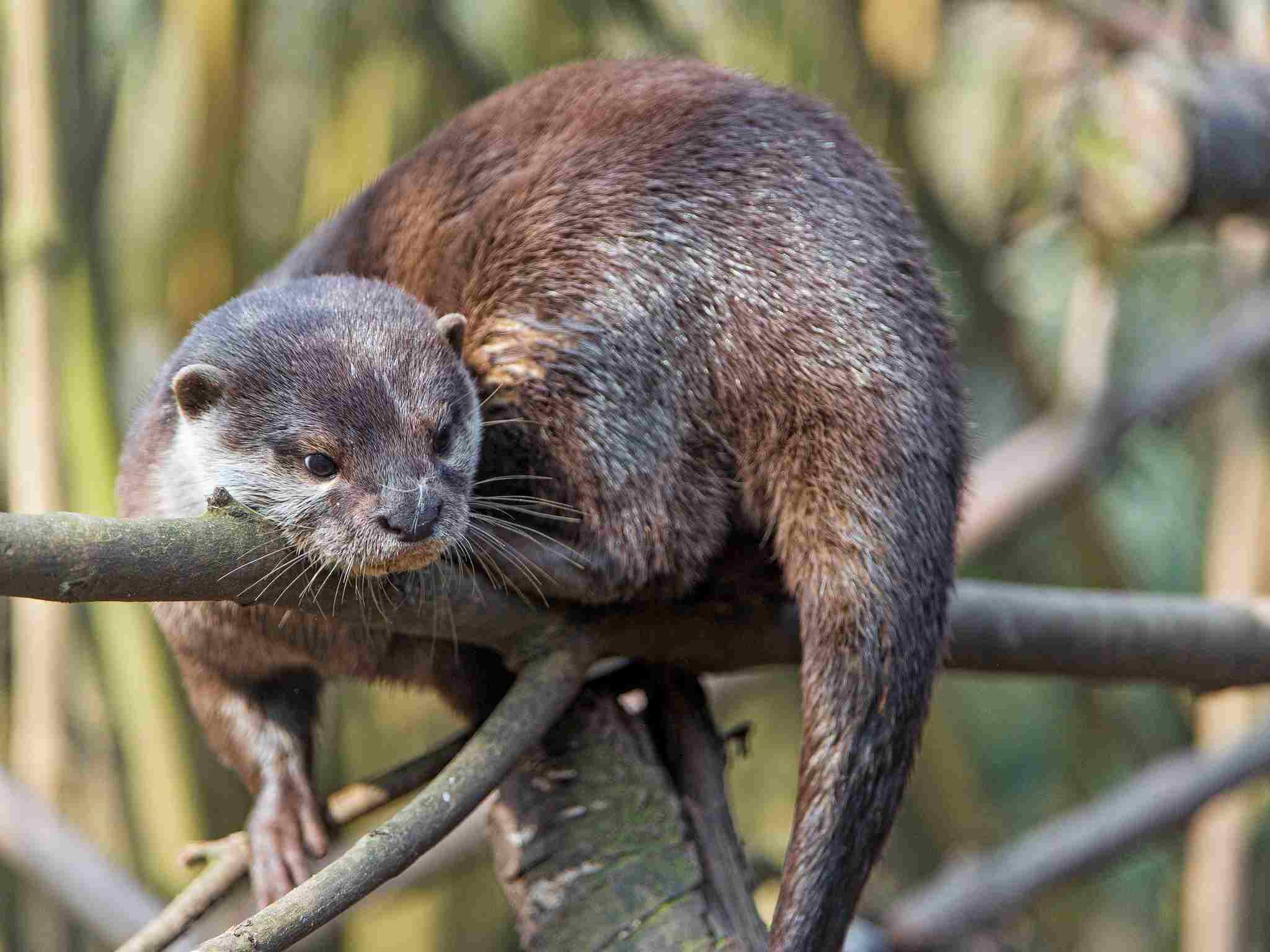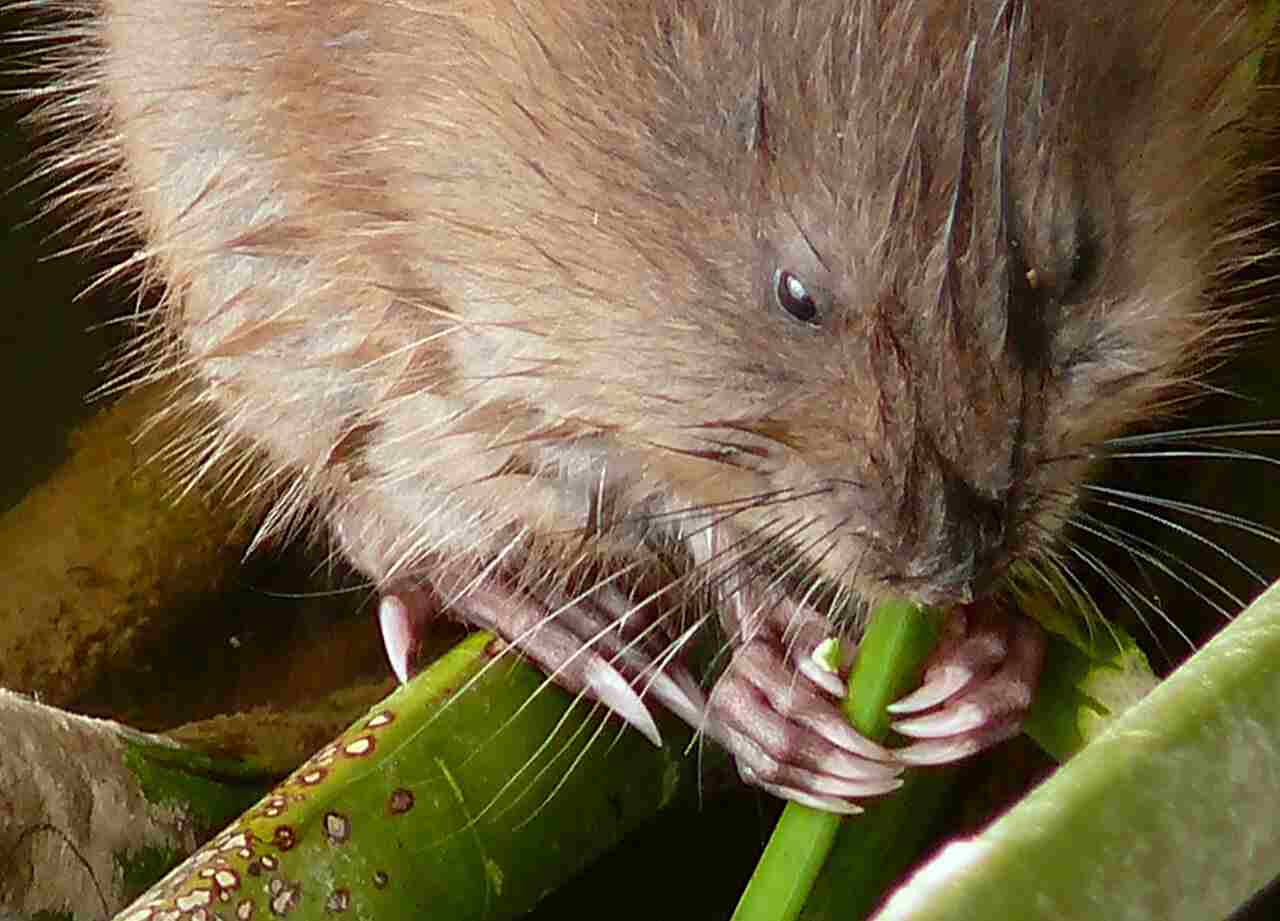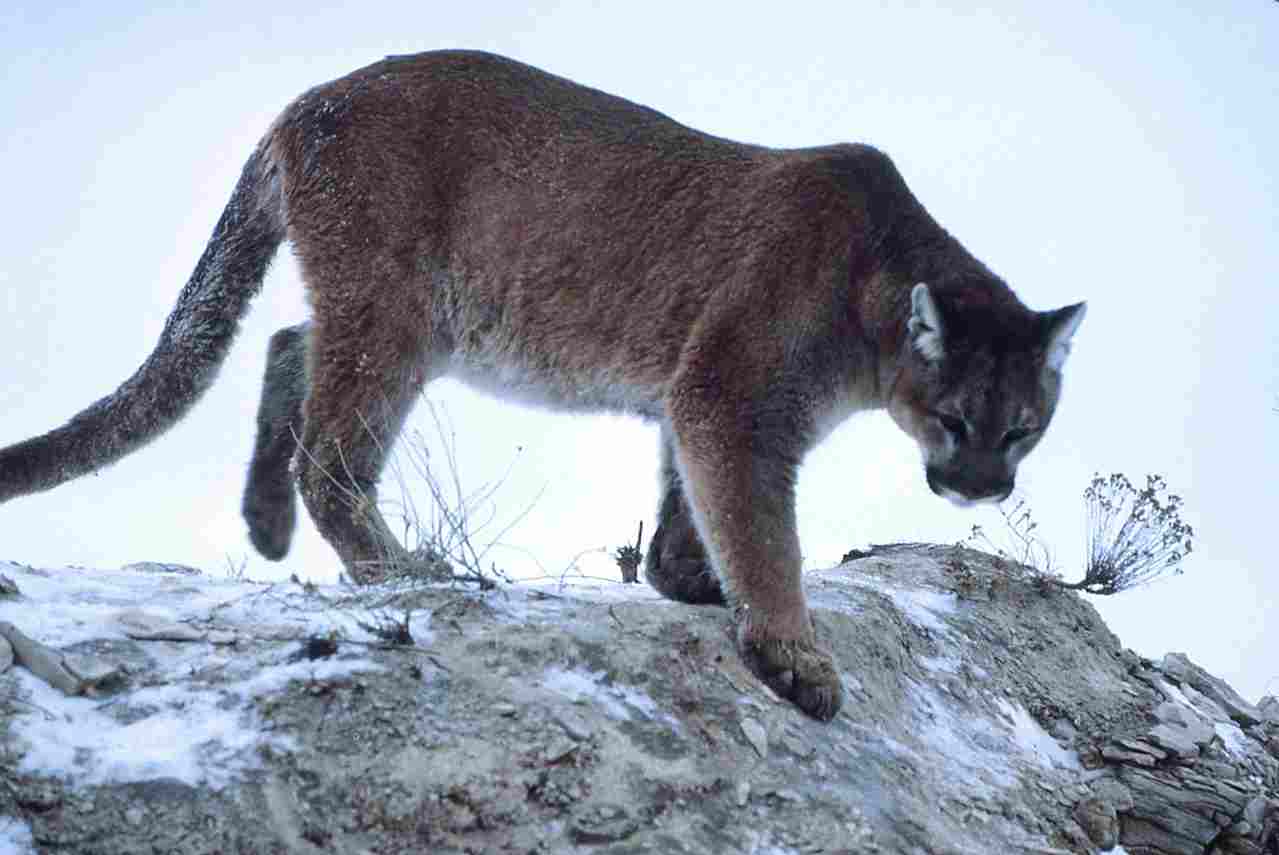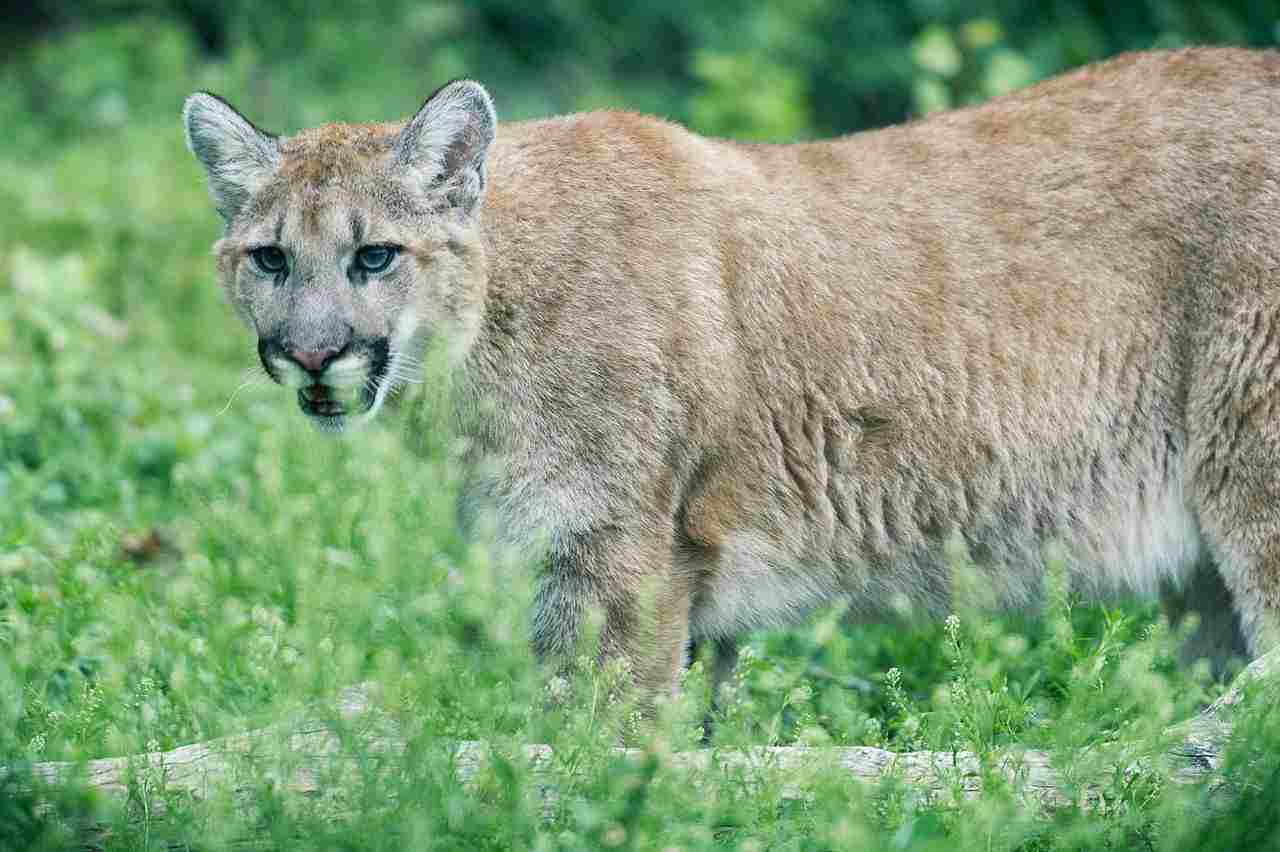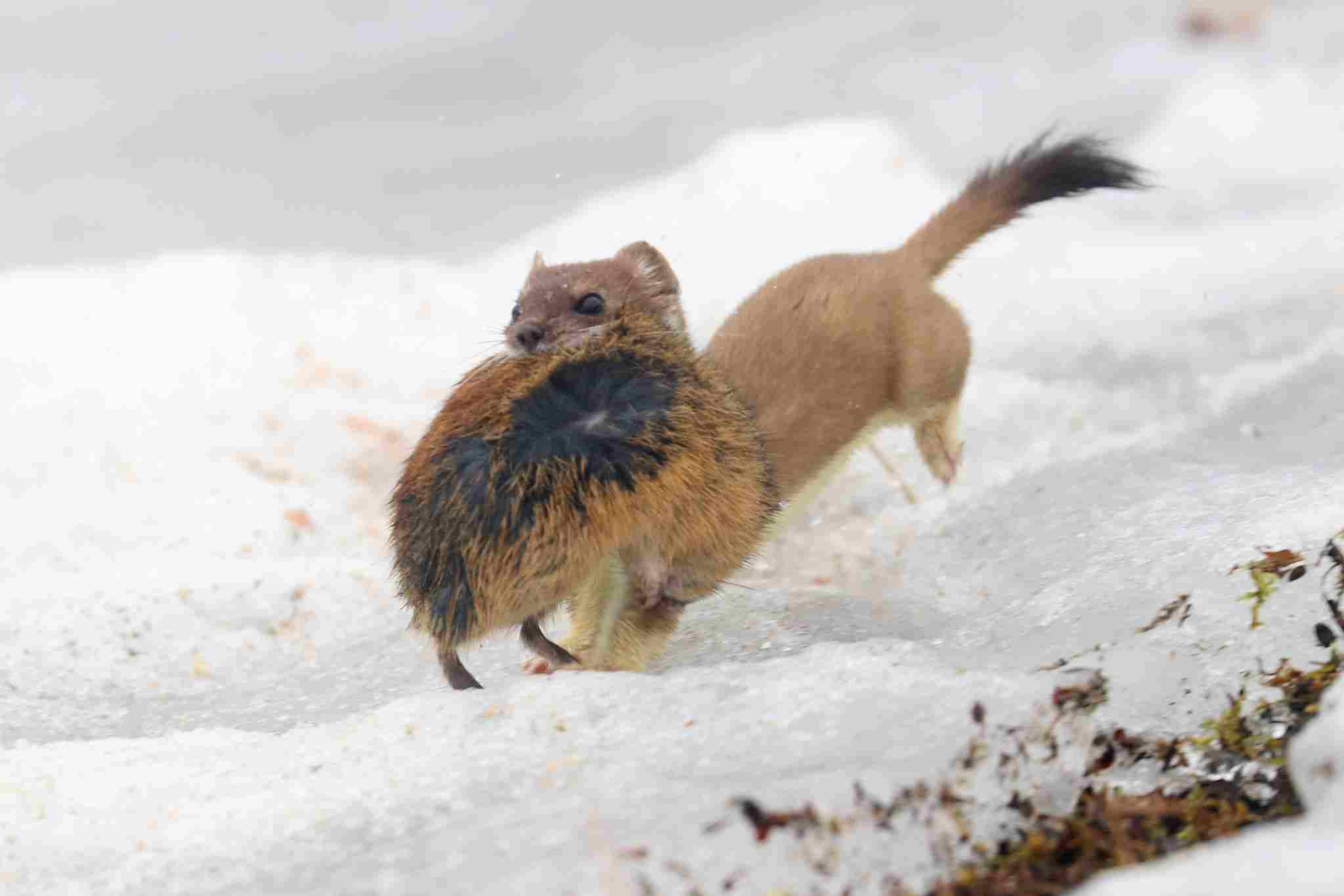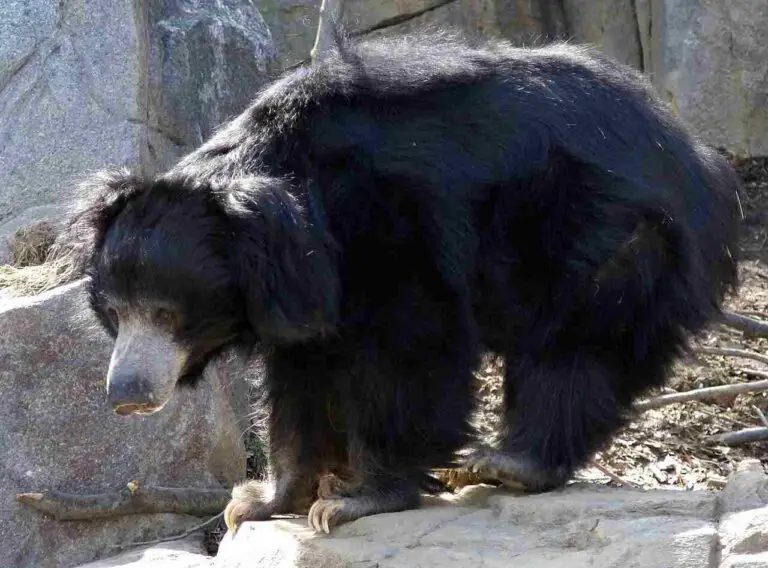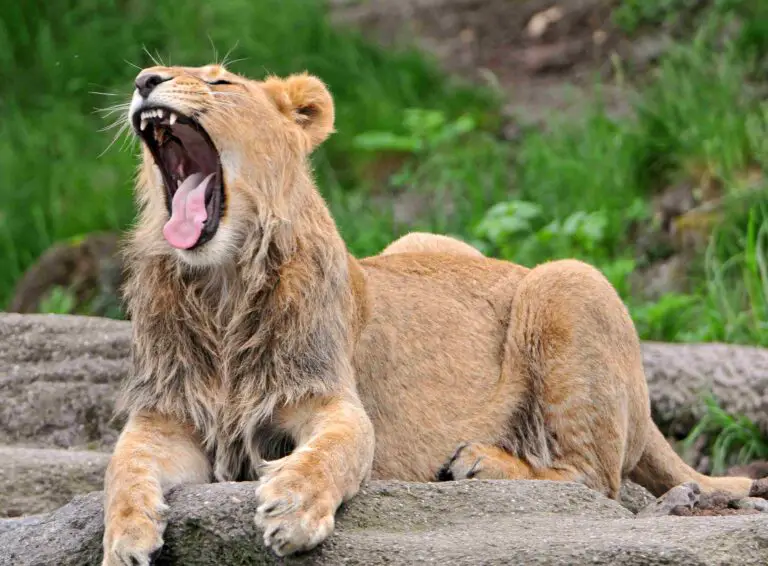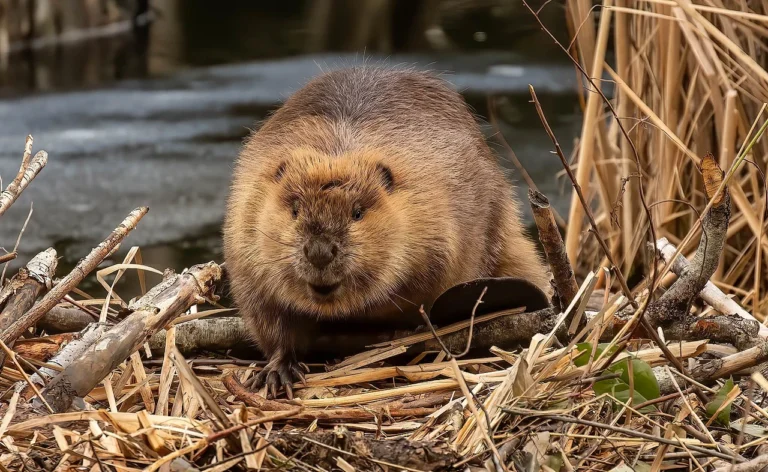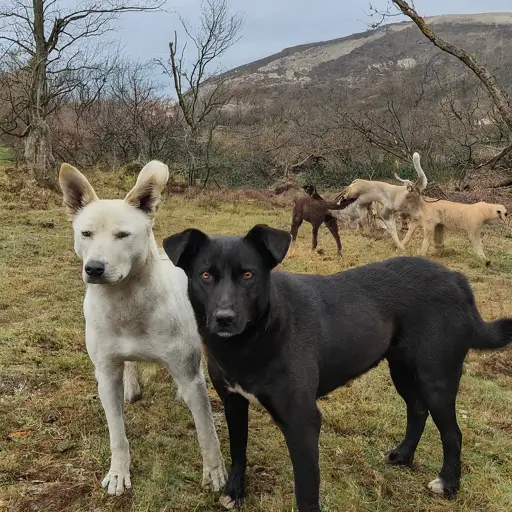11+ Carnivores in The Forest Ecosystem Discussed
Carnivores in the forest ecosystem are essential for maintaining ecological balance by controlling prey populations and contributing to biodiversity. They adapt to forest habitats with specialized hunting techniques and physical traits. However, they face threats from habitat loss, fragmentation, and human-wildlife conflicts. Conservation efforts aim to protect carnivores and their habitats. Some prominent forest carnivores include the cougar, wolf, wolverine, leopard, lynx, mink, American marten, fisher cat, eagle, hawk, owl, and bushmaster.
1. Cougar:
The cougar, also known as the mountain lion or puma, prowls the forests with a majestic and solitary grace. As one of the most formidable apex predators in North America, cougars command respect and awe with their stealth, power, and adaptability. With a sleek, muscular build and keen senses, these carnivores are finely tuned hunting machines, capable of taking down prey much larger than themselves.
Inhabiting a wide range of habitats, from dense forests to arid deserts, cougars are highly adaptable creatures. They possess a solitary nature, preferring to roam vast territories in search of prey, which primarily includes deer, but they are known to target smaller mammals as well. With their exceptional agility and strength, cougars are capable of ambushing their prey with lightning speed, often delivering a fatal bite to the neck or throat.
Despite their prowess, cougars face numerous threats, including habitat loss, fragmentation, and conflicts with humans. Human encroachment into cougar territories has led to increased encounters, sometimes resulting in conflicts. Conservation efforts aim to mitigate these conflicts and preserve the cougar’s crucial role in maintaining ecosystem balance.
With their enigmatic presence and vital role in forest ecosystems, cougars symbolize the wild, untamed spirit of the wilderness, reminding us of the delicate balance between predator and prey in the intricate tapestry of nature.
2. Wolf:
The wolf, revered for its intelligence, social structure, and prowess as a hunter, embodies the essence of wilderness and pack dynamics. These carnivores, known for their iconic howls that echo through the forests, are highly social animals, living in cohesive family units called packs. Within the pack, each member has a specific role, contributing to the group’s survival through cooperative hunting, pup rearing, and territory defense.
Wolves are apex predators, exerting a profound influence on their ecosystems. Their primary prey includes deer, elk, and moose, but they also hunt smaller mammals when necessary. Wolves are renowned for their stamina and strategy in hunting, often employing coordinated tactics to bring down large prey.
Despite their cultural significance and ecological importance, wolves have faced persecution and habitat loss throughout history. Human-wolf conflicts, fueled by livestock depredation and fear, have led to widespread eradication efforts in many regions. Conservation efforts aim to restore wolf populations and promote coexistence between wolves and human communities.
The return of wolves to their historical ranges in some areas has sparked debates and controversies, highlighting the complex relationship between humans and wildlife. Yet, the presence of wolves serves as a barometer of ecosystem health, signaling the restoration of natural balance and the resilience of wilderness landscapes.
3. Wolverine:
The wolverine, often dubbed the “reclusive glutton,” roams the remote wilderness with a fierce and solitary demeanor. Despite its small size, this carnivore possesses an indomitable spirit and remarkable strength, capable of taking down prey much larger than itself. With a stocky build, powerful jaws, and sharp claws, wolverines are well-equipped for survival in harsh environments.
Found in cold, northern forests and mountainous regions, wolverines are opportunistic hunters and scavengers, feeding on a variety of prey, including small mammals, carrion, and occasionally larger ungulates. Known for their voracious appetite and ability to consume large quantities of food, wolverines play a crucial role in scavenging carcasses and helping to prevent the spread of disease.
Wolverines have adapted to life in rugged landscapes, traversing vast territories in search of food and mates. Their elusive nature and low population densities make them challenging to study and monitor, contributing to their mystique and allure in the wild.
Despite their resilience, wolverines face threats from habitat loss, climate change, and human activities. Conservation efforts aim to protect critical habitat and corridors, ensuring the long-term survival of these iconic and enigmatic carnivores in the forest ecosystem.
4. Leopard:
The leopard, a master of stealth and camouflage, prowls the dense forests with unmatched grace and agility. Renowned for its solitary nature and elusive behavior, the leopard embodies the epitome of feline grace and predatory prowess. With its sleek coat adorned with rosette markings, the leopard blends seamlessly into its forest habitat, making it a formidable and elusive hunter.
Found across a wide range of habitats, from tropical rainforests to savannas and mountains, leopards are highly adaptable carnivores. They are opportunistic predators, preying on a variety of animals, including deer, monkeys, birds, and smaller mammals. With their powerful jaws and retractable claws, leopards are capable of subduing prey with precision and efficiency.
Despite their adaptability and hunting prowess, leopards face numerous threats, including habitat loss, poaching, and conflicts with humans. Human-wildlife conflicts often arise when leopards prey on livestock or encroach into human settlements, leading to retaliatory killings and persecution.
Conservation efforts aim to mitigate these conflicts and protect leopard populations through habitat conservation, anti-poaching measures, and community-based initiatives. By safeguarding the forest habitats where leopards roam, we can ensure the survival of these iconic carnivores and the biodiversity of their ecosystems for future generations.
5. Lynx:
The lynx, with its distinctive tufted ears and bobbed tail, roams the northern forests with a silent and elusive presence. These medium-sized cats are perfectly adapted to their cold and snowy habitats, with thick fur coats that provide insulation against the harsh winters. Lynxes are solitary creatures, preferring the solitude of dense forests and mountainous terrain.
Renowned for their keen sense of sight and hearing, lynxes are skilled hunters, specializing in stalking and ambushing their prey. Their primary prey includes snowshoe hares, but they also target small mammals, birds, and occasionally larger ungulates when available. With their powerful legs and sharp retractable claws, lynxes are capable of pouncing on their prey with lightning speed and accuracy.
Lynxes play a crucial role in regulating prey populations and maintaining ecosystem balance in their habitats. Despite their adaptability and hunting prowess, lynxes face threats from habitat loss, fragmentation, and human activities such as poaching and road mortality.
Conservation efforts focus on protecting critical habitat, creating wildlife corridors, and implementing measures to reduce human impacts on lynx populations. By safeguarding the forest ecosystems where lynxes thrive, we can ensure the long-term survival of these iconic and elusive carnivores in the wild.
6. Mink:
The mink, with its sleek and agile physique, navigates the wetlands and waterways of forested regions with precision and grace. These semi-aquatic carnivores are perfectly adapted to their aquatic habitats, with streamlined bodies, webbed feet, and thick, water-repellent fur coats that keep them warm and buoyant in the water.
Minks are opportunistic hunters, preying on a variety of aquatic and terrestrial animals, including fish, frogs, birds, and small mammals. With their sharp teeth and strong jaws, minks are skilled hunters, capable of catching fast-moving prey both on land and in water. Their semi-aquatic lifestyle allows them to exploit a diverse range of habitats, from rivers and streams to marshes and estuaries.
Despite their adaptability and hunting prowess, minks face threats from habitat loss, pollution, and trapping for their fur. Conservation efforts aim to protect wetland habitats and waterways, ensuring the long-term survival of mink populations in their natural ecosystems.
By preserving the forested landscapes and waterways where minks reside, we can maintain the ecological balance and biodiversity of these vital habitats for future generations.
7. American Marten:
The American marten, a member of the weasel family, roams the dense forests of North America with a swift and agile demeanor. These elusive carnivores are known for their slender bodies, bushy tails, and dark fur coats, which provide camouflage in their forest habitats. American martens are primarily solitary creatures, with males maintaining larger territories than females.
Martens are opportunistic hunters, preying on a variety of small mammals, birds, and insects. With their sharp claws and teeth, martens are skilled climbers and adept hunters, capable of ambushing prey in trees or on the forest floor. Their diet also includes fruits, nuts, and carrion, making them important dispersers of seeds and scavengers in their ecosystems.
Despite their adaptability and hunting prowess, American martens face threats from habitat loss, fragmentation, and trapping for their fur. Conservation efforts focus on protecting forested habitats and maintaining connectivity between populations to ensure genetic diversity and long-term survival.
By preserving the forest ecosystems where American martens reside, we can safeguard the biodiversity and ecological integrity of these vital habitats for future generations.
8. Fisher Cat:
The fisher, often referred to as a “fisher cat” despite not being a member of the cat family, is a robust and cunning carnivore that inhabits the forests of North America. Despite its name, fishers are primarily terrestrial mammals, although they are adept climbers and occasionally prey on fish. With their long, slender bodies, sharp claws, and thick fur coats, fishers are well-adapted to navigating dense forest undergrowth and climbing trees in pursuit of prey.
Fishers are opportunistic hunters, preying on a wide variety of animals, including small mammals, birds, insects, and occasionally larger prey such as porcupines. They are known for their stealthy and agile hunting techniques, often ambushing prey from above or chasing them through the forest undergrowth. Fishers play a crucial role in controlling rodent populations and maintaining ecosystem balance in their habitats.
Despite their adaptability and hunting prowess, fishers face threats from habitat loss, fragmentation, and trapping for their fur. Conservation efforts aim to protect forested habitats and create wildlife corridors to ensure the long-term survival of fisher populations in their natural ecosystems.
By preserving the forest landscapes where fishers reside, we can maintain the ecological balance and biodiversity of these vital habitats for future generations.
9. Eagle:
The eagle, with its majestic wingspan and keen eyesight, reigns as the king of the skies in forested regions across the world. These powerful raptors are symbols of strength, freedom, and grace, embodying the wild spirit of the forest. Eagles are renowned for their exceptional hunting skills, soaring high above the treetops in search of prey.
With their powerful talons and sharp beaks, eagles are formidable hunters, preying on a variety of animals, including fish, small mammals, birds, and reptiles. They are apex predators in their ecosystems, playing a crucial role in regulating prey populations and maintaining ecosystem balance.
Despite their status as apex predators, eagles face threats from habitat loss, pollution, and human activities such as electrocution, lead poisoning, and collisions with power lines and wind turbines. Conservation efforts aim to protect eagle nesting sites, reduce human impacts on eagle populations, and rehabilitate injured or orphaned eagles for release back into the wild.
By preserving the forested habitats where eagles reside, we can ensure the long-term survival of these iconic raptors and maintain the ecological balance of forest ecosystems for future generations.
10. Hawk:
The hawk, with its sharp talons and keen eyesight, patrols the skies above forested regions with precision and agility. These birds of prey are known for their predatory prowess and aerial acrobatics, making them formidable hunters in their ecosystems. Hawks are found across a wide range of habitats, from dense forests to open grasslands and urban areas.
Hawks are opportunistic hunters, preying on a variety of animals, including small mammals, birds, reptiles, and insects. With their powerful wings and swift flight, hawks are capable of pursuing prey both on the ground and in the air. They play a crucial role in controlling rodent populations and maintaining ecosystem balance in their habitats.
Despite their adaptability and hunting prowess, hawks face threats from habitat loss, pollution, and human activities such as electrocution, vehicle collisions, and illegal hunting. Conservation efforts aim to protect hawk nesting sites, reduce human impacts on hawk populations, and rehabilitate injured or orphaned hawks for release back into the wild.
By preserving the forested habitats where hawks reside, we can ensure the long-term survival of these iconic raptors and maintain the ecological balance of forest ecosystems for future generations.
11. Owl:
The owl, with its silent flight and piercing gaze, embodies the mystery and nocturnal allure of the forest. These enigmatic birds of prey are renowned for their exceptional night vision, keen hearing, and silent flight, making them formidable hunters in the darkness of the forest. Owls are found in a wide range of habitats, from dense forests to open woodlands and grasslands.
Owls are opportunistic hunters, preying on a variety of animals, including rodents, birds, insects, and even fish. With their sharp talons and powerful beaks, owls are capable of capturing and dispatching prey with swift and efficient strikes. They play a crucial role in controlling rodent populations and maintaining ecosystem balance in their habitats.
Despite their adaptability and hunting prowess, owls face threats from habitat loss, pollution, and human activities such as habitat fragmentation, vehicle collisions, and illegal hunting. Conservation efforts aim to protect owl nesting sites, reduce human impacts on owl populations, and rehabilitate injured or orphaned owls for release back into the wild.
By preserving the forested habitats where owls reside, we can ensure the long-term survival of these iconic birds of prey and maintain the ecological balance of forest ecosystems for future generations.
12. Bushmaster:
The bushmaster, also known as the “lancehead,” is a large and venomous snake that inhabits the dense forests of Central and South America. These formidable reptiles are renowned for their potent venom and cryptic camouflage, making them elusive and dangerous predators in their ecosystems. Bushmasters are found in a variety of forested habitats, from tropical rainforests to montane forests and dry woodlands.
As ambush predators, bushmasters rely on stealth and patience to capture their prey, which primarily includes small mammals, birds, and reptiles. With their heat-sensitive pits and powerful jaws, bushmasters can strike with lightning speed and deliver a deadly dose of venom to incapacitate their prey. Despite their large size and potent venom, bushmasters are generally shy and reclusive, preferring to avoid human encounters whenever possible.
Despite their elusive nature, bushmasters face threats from habitat loss, fragmentation, and human activities such as deforestation, agricultural expansion, and illegal hunting. Conservation efforts aim to protect bushmaster habitats, raise awareness about their ecological importance, and mitigate human-bushmaster conflicts to ensure the long-term survival of these iconic reptiles in their natural ecosystems.
By preserving the forested landscapes where bushmasters reside, we can maintain the ecological balance and biodiversity of these vital habitats for future generations.
*Summary
-
Cougar:
-
Majestic and solitary apex predator
-
Adaptable to various habitats, from forests to deserts
-
Prefers deer but also hunts smaller mammals
-
Faces threats from habitat loss and human conflicts
-
Conservation efforts focus on preserving habitats and mitigating conflicts
-
-
Wolf:
-
Highly social apex predator living in packs
-
Hunts cooperatively, primarily targeting large ungulates
-
Faces historical persecution and habitat loss
-
Conservation efforts aim to restore populations and promote coexistence
-
-
Wolverine:
-
Reclusive carnivore adapted to cold, northern forests
-
Opportunistic hunter and scavenger, vital for ecosystem balance
-
Faces threats from habitat loss and climate change
-
Conservation focuses on habitat protection and connectivity
-
-
Leopard:
-
Stealthy and solitary predator with a wide range
-
Hunts a variety of prey, including deer and monkeys
-
Faces threats from habitat loss and human conflicts
-
Conservation efforts aim to protect habitats and mitigate conflicts
-
-
Lynx:
-
Elusive medium-sized cat specialized for cold habitats
-
Hunts primarily snowshoe hares but also small mammals
-
Faces threats from habitat loss and fragmentation
-
Conservation focuses on protecting habitat and corridors
-
-
Mink:
-
Semi-aquatic carnivore adapted for wetland habitats
-
Opportunistic hunter preying on fish, frogs, and birds
-
Faces threats from habitat loss and pollution
-
Conservation efforts aim to protect wetlands and waterways
-
-
American Marten:
-
Agile forest carnivore with slender body and bushy tail
-
Hunts small mammals, birds, and insects
-
Faces threats from habitat loss and trapping
-
Conservation focuses on protecting forests and connectivity
-
-
Fisher Cat:
-
Robust forest carnivore known for climbing abilities
-
Hunts small mammals, birds, and occasionally fish
-
Faces threats from habitat loss and trapping
-
Conservation efforts focus on protecting forested habitats
-
-
Eagle:
-
Majestic raptor known for its keen eyesight and hunting skills
-
Hunts a variety of prey, including fish and small mammals
-
Faces threats from habitat loss and human activities
-
Conservation focuses on protecting nesting sites and reducing impacts
-
-
Hawk:
-
Agile raptor patrolling forest skies for prey
-
Hunts small mammals, birds, and insects
-
Faces threats from habitat loss and human activities
-
Conservation efforts focus on protecting nesting sites and reducing impacts
-
-
Owl:
-
Nocturnal predator with silent flight and keen senses
-
Hunts rodents, birds, and insects
-
Faces threats from habitat loss and human activities
-
Conservation focuses on protecting nesting sites and reducing impacts
-
-
Bushmaster:
-
Large, venomous snake inhabiting Central and South American forests
-
Ambush predator feeding on small mammals, birds, and reptiles
-
Faces threats from habitat loss and human activities
-
Conservation efforts focus on habitat protection and mitigating conflicts
-
| Carnivores | Summary |
| Cougar |
Majestic solitary predator, adaptable, preys on deer, faces habitat loss and human conflicts
|
| Wolf |
Social apex predator in packs, hunts cooperatively, faces historical persecution and habitat loss
|
| Wolverine |
Reclusive carnivore, opportunistic hunter, faces threats from habitat loss and climate change
|
| Leopard |
Stealthy predator with wide range, hunts various prey, faces threats from habitat loss and conflicts
|
| Lynx |
Elusive cat specialized for cold habitats, hunts snowshoe hares, faces threats from habitat loss
|
| Mink |
Semi-aquatic hunter in wetlands, preys on fish and birds, faces threats from habitat loss
|
| American Marten |
Agile forest carnivore, hunts small mammals and birds, faces threats from habitat loss and trapping
|
| Fisher Cat |
Robust forest carnivore, climbs trees, preys on small mammals and birds, faces threats from trapping
|
| Eagle |
Majestic raptor, hunts fish and mammals, faces threats from habitat loss and human activities
|
| Hawk |
Agile forest raptor, hunts small mammals and birds, faces threats from habitat loss and human activities
|
| Owl |
Nocturnal predator, hunts rodents and birds, faces threats from habitat loss and human activities
|
| Bushmaster |
Large venomous snake, ambush predator, faces threats from habitat loss and human activities
|
Related FAQs
Frequently Asked Questions about Forest Carnivores:
-
What is the role of carnivores in forest ecosystems?
-
Carnivores play a crucial role in maintaining ecosystem balance by controlling prey populations, which prevents overgrazing and maintains biodiversity. They also help regulate the health of prey populations by targeting sick or weak individuals.
-
-
How do carnivores adapt to their forest habitats?
-
Carnivores have evolved various adaptations to thrive in forest environments, including camouflage, stealthy hunting techniques, specialized diets, and physical traits such as sharp claws and keen senses.
-
-
What are the main threats to forest carnivores?
-
Habitat loss and fragmentation due to deforestation, human development, and climate change are significant threats to forest carnivores. They also face risks from human-wildlife conflicts, including poaching, trapping, and collisions with vehicles or power lines.
-
-
How do conservation efforts help protect forest carnivores?
-
Conservation efforts focus on preserving habitat, creating wildlife corridors, reducing human-wildlife conflicts, and implementing measures to mitigate threats such as poaching and habitat destruction. Research and monitoring also play a crucial role in understanding carnivore populations and guiding conservation actions.
-
-
What can individuals do to support forest carnivore conservation?
-
Individuals can support carnivore conservation efforts by advocating for habitat protection, supporting organizations dedicated to wildlife conservation, practicing responsible outdoor recreation to minimize human impacts on wildlife, and spreading awareness about the importance of carnivores in forest ecosystems.
-
